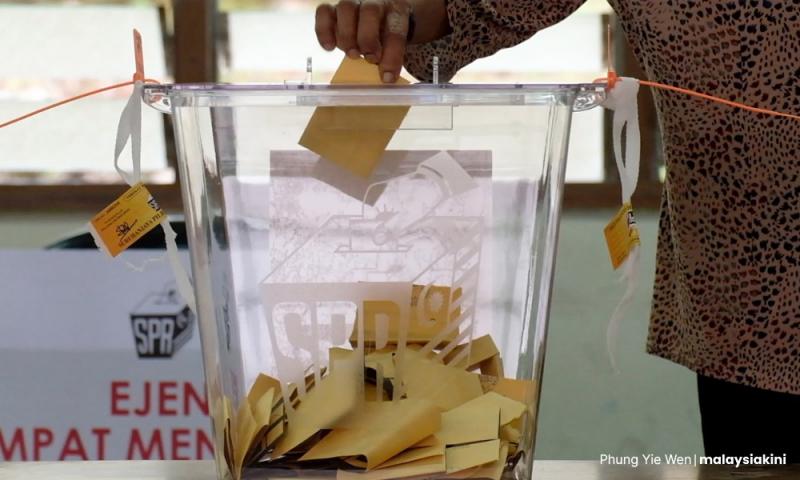LETTER | Upholding ‘one person, one vote, one value’ principle
LETTER | The 'Asia & the Pacific roundtable discussion on boundary delimitation and malapportionment: Practice & Solutions', concluded after two days of discussion on Oct 28 and 29 with the Kuala Lumpur Declaration on Apportionment and Boundary Delimitation.
It was jointly organised by the International Institute for Democracy and Electoral Assistance (International IDEA), The Coalition for Clean and Fair Elections (Bersih), Tindak Malaysia and the Association for Elections and Democracy, Indonesia (Perludem).
Election management bodies and civil society organisations from eight countries - Australia, Bhutan, India, Indonesia, Mongolia, the Philippines, Sri Lanka, and host, Malaysia, with over 30 participants - discussed malapportionment problems, lessons learned from their respective countries’ experiences, the role of technology in boundary delimitation process, boundary delimitation best practices, and brainstorming solutions to prevent and mitigate malpractices.
A major output of this roundtable is a joint declaration observing the current conditions of boundary delimitation and calling for improvements.
We hereby publicise and disseminate the Kuala Lumpur Declaration on Apportionment and Boundary Delimitation, which is jointly formulated by the participants based on informed theories and best practices.
Guided by Article 21 of the United Nations' 1948 Universal Declaration of Human Rights that "the will of the people shall be the basis of the authority of government";
Upholding the ‘one person, one vote, one value’ principle in delimitation of constituencies as enshrined in International Covenant on Civil and Political Rights;
Recognising that elections must maximally facilitate representation and promote competition and not be subverted into rituals perpetuating the incumbents;
Acknowledging that allocation of legislative seats to the political or administrative divisions constituting the political community (nation, state/province, etc) should be calculated based on precisely-defined formulas, with mechanisms for reapportionment over time, not arbitrarily decided by the legislature or other bodies;
Considering the learned viewpoints of institutions including the Venice Commission and the International IDEA,
We, the participants at the 'Asia & the Pacific Roundtable Discussion - Boundary Delimitation & Malapportionment: Practice & Solutions' hereby call upon the authorities administering boundary delimitation in Asia and the Pacific region to adopt the following principles and recommendations with regard to apportionment, boundary delimitation, process and institution of delimitation:
Apportionment of constituencies
a. As a general principle, all constituencies should have numbers of voters/residents within a maximum deviation of 10 percent from the average, in accordance with the ‘one person, one vote, one value’ principle.
b. Over-representation for small or super divisions (states/provinces, etc) should be restricted to the upper chamber in a bicameral legislature which may force deliberations and compromises, but should not be allowed for the chamber in which the government is formed, be it the lower chamber in a bicameral legislature, or a unicameral legislature.
c. Over-representation in favour of rural and inland constituencies is not justified. If there are concerns regarding difficulty in outreach to less accessible constituents, or rural disadvantage, they should be addressed by appropriate resourcing.
Boundary delimitation
a. Subject to the need to overcome malapportionment, boundaries of administrative units with significance in representation should be respected.
b. Constituency boundaries should be contiguous and relatively compact, subject to natural and infrastructure barriers, except those separated by a body of water.
Process and institution in delimitation
a. The boundary authority should be independent, impartial and professional.
b. A delimitation exercise, which should be completed within two years, should commence in any of the following circumstances:
i. Upon meeting the interval, which is the length of two full parliamentary terms;
ii. Changes in the number of elected representatives;
iii. Incorporation or formation of new constituent units; or
iv. Occurrence of malapportionment across one-third of constituencies exceeding 10 percent threshold consistently for a year.
c. When the delimitation process starts, members of the public should be welcome to submit their proposals within a reasonable time.
d. The boundary authority should study and consider these proposals in its recommendations, which should be subject to adequate rounds of public scrutiny, objection and hearing.
e. The boundary authority should provide justifications for their recommendations and responses to objections.
f. All information relevant to the legal criteria for the drawing of boundaries, including statistics and maps, should be made available to the public throughout the delimitation process.
g. The final decision by the boundary authority must be binding.
Jointly released by Bersih, International IDEA, Tindak Malaysia, Perludem
The views expressed here are those of the author/contributor and do not necessarily represent the views of Malaysiakini.
RM12.50 / month
- Unlimited access to award-winning journalism
- Comment and share your opinions on all our articles
- Gift interesting stories to your friends
- Tax deductable
